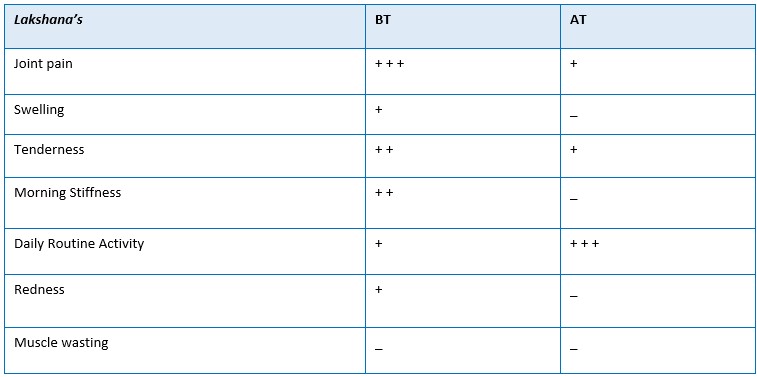A Case Study on Bala Amavata w.s.r. to Juvenile Rheumatoid Arthritis
DOI:
https://doi.org/10.21760/jaims.9.3.44Keywords:
Amavata, Rheumatoid Arthritis, Auto-immune DiseaseAbstract
Introduction: Amavata is one of the most difficult to cure (Krichhrasadhya) diseases mentioned in Ayurveda. The main pathological factor in the development of this disease is “Ama”. This Ama is carried by “Vata” and travels throughout the body and gets lodges in the joints, which is the seat of “Kapha”. Accumulation of Ama in all the joints, results in Shotha (edema), Shoola (pain) and Stabdhata (stiffness) in the joints. Clinically, it is closely related to Rheumatoid Arthritis, which is a chronic inflammatory autoimmune disease involving multiple joints of the body. Methodology: A 13years boy with multiple joint pain, diagnosed as Amavata treated with Ayurvedic treatment modalities like Patrapinda Sweda and Virechana. Result: Remarkable improvement was noticed in pain, swelling, morning stiffness and restricted joint movement within first two months. Discussion: In modern medicine, the treatment of this disease includes steroids and Immunomodulator drugs together with non-steroidal anti-inflammatory drugs (NSAIDs), which acts as only Symptomatic treatment, whereas Virechana karma is one of the important bio-purificative methods which is indicated for complete elimination of Dushita Doshas and Ama from the body. Hence this article highlights on the importance of Ayurvedic treatment in the management of Amavata (Rheumatoid Arthritis).
Downloads
References
Lipsky Peter E. Rheumatoid arthritis. In: Longo D.L., Kasper D.L., Jameson J.L., Fauci A.S., Hauser S.L., Loscalzo J., editors. 18th ed. vol. II. Mc Graw Hill; New York: 2012. pp. 2738–2752. (Harrison principles of internal medicine).
Young A., Dixey J., Kulinskaya E., Cox N., Davies P., Devlin J. Which patients stop working because of rheumatoid arthritis? Results of five years' follow up in 732 patients from the Early RA Study (ERAS) Ann Rheum Dis. 2002; 61:335–340.
Mahato R.R., Dave A.L., Shukla V.D. A comparative study of Rasona Rasnadi Ghanavati and Simhanada Guggulu on Amavata with special reference to rheumatoid arthritis. Ayu. 2011;32(1):46–54.
Chaturvedi G, Shastri K, editors. Charaka Samhita of Agnivesha, Siddhi Sthana, Ch. 2, Ver. 13. Reprint ed. Varanasi: Chaukhambha Bharati Academy; 2007. p. 981.
Shastri B.S., editor. 6th ed. vol. I. Chaukhamba Sanskrit Sansthan; Varanasi: 1997. p. 565. (Yogaratnakara of unknown author, Amavata Nidana).
Acharya Y.T., editor. Charaka Samhita of Agnivesha, Chikitsa Sthana; Vatashonita Chikitsa: chapter 29, Verse 19 – 23. Chaukhamba Surbharati Prakashan; Varanasi: 2011. p. 628.Reprint 2011.
Acharya Y.T., editor. Charaka Samhita of Agnivesha, Chikitsa Sthana; Vaytavyadhi Chikitsa: chapter 28, Verse 37. Chaukhamba Surbharati Prakashan; Varanasi: 2011. p. 618. reprint 2011.















